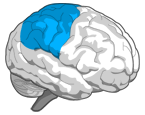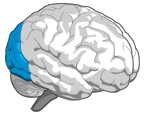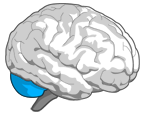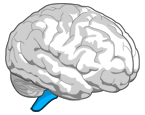MS and cognitive function: Introduction
- In this section:
- Cognitive change in MS
- Why does cognitive change happen?
- The Brain
Cognitive change in MS
Cognitive change in MS is a complex issue. People with MS want to understand what cognition is, why they are experiencing problems and how they can help themselves. Many healthcare professionals feel they can’t answer these questions and so this website and the accompanying booklet have been written as a guide to provide answers and suggest strategies to help patients. They are not meant to be a comprehensive resource but a collection of ideas.
What is cognition?
Cognition is how we think, reason and remember. It describes how we concentrate, maintain and divide attention, learn and remember new things, plan, problem-solve, reason and monitor our own behaviour. In other words it is the process of thinking and acting.
Many people with MS describe cognitive changes as an “invisible symptom” and this leads to distress and fear
Approximately 45 - 65% of people with MS report cognitive changes. The most commonly reported difficulties are short-term (recent) memory, concentration, slowed information processing, abstract reasoning and problem solving. These can vary from person to person and in the extent to which they affect a person.
Further reading > This information is not contained in the book 'MS and cognitive function'. If you own the booklet, look out for this symbol for further content throughout this website
Demyelination is the root cause of the symptoms that people with MS experience. When MS is active, myelin is seen as foreign material and so is promptly attacked by the immune cells in the body. Where nerve endings have lost myelin they become scarred and cannot function properly. Instead of the message being passed securely along the nerve fibres, this scarring or ‘sclerosis’ causes the message to become distorted, slowed or lost.
The body can make new myelin and the process is known as remyelination. The type and amount of remyelination varies between different types and stages of MS. Although remyelination helps greatly, myelin on a remyelinated axon is thinner than normal myelin which causes the passage of signals to be slower.
Why does cognitive change happen?
MS is a demyelinating disease. Demyelination is the word used for a loss of myelin - the fatty sheath which protects the nerve fibres in your brain. MS causes the myelin to become damaged and causes the messages to and from the brain to become slowed down or distorted. The myelin sheath is like the protective covering on electrical wire - when it is damaged, the flow of electricity to the attached appliance is interrupted, causing intermittent problems or causing the appliance not to work at all. Because of changes to the myelin, changes occur in parts of the brain and spinal cord and sometimes these can affect a person’s memory and thinking.
The Brain
The brain is made up of several areas including the cerebrum, cerebellum and the brain stem.
The Cerebrum
The cerebrum has two hemispheres and each consists of four lobes; frontal, temporal, parietal and occipital.
Frontal Lobe

Important for:
- Planning
- Organisation
- Initiation
- Problem-solving
- Judgement
- Personality
- Abstract thinking
- Mood
- Speech
- Attention to task
- Reflection
- Movement
Parietal Lobe

Important for:
- Integrating sensory information
- Reading
- Writing
- Drawing
- Spatial judgement
Occipital Lobe

Important for:
- Integrating sensory information
- Reading
- Writing
- Drawing
- Spatial judgement
Temporal Lobe

Important for:
- Integrating sensory information
- Reading
- Writing
- Drawing
- Spatial judgement
The Hemispheres
The right hemisphere is responsible for controlling movement and monitoring sensation on the left hand side of the body, and the left hemisphere controls the right hand side of the body. For the majority of people the left hemisphere is important for verbal skills and the right hemisphere is important for visual skills.
The two hemispheres are connected by a large bundle of nerve fibres called the Corpus Callosum. Its role is to help both sides of the brain to communicate with each other.
The Cerebellum

The cerebellum is located below the back of the cerebrum and has a role in co-ordination, balance and walking
The Brain Stem

Connects the Cerebrum to the Spinal Cord, and has a number of areas each with its own function. It is important in automatic activities such as breathing and swallowing and has a significant role in maintaining alertness.
All sensory and movement messages pass through this area going to the body from the brain and vice versa.